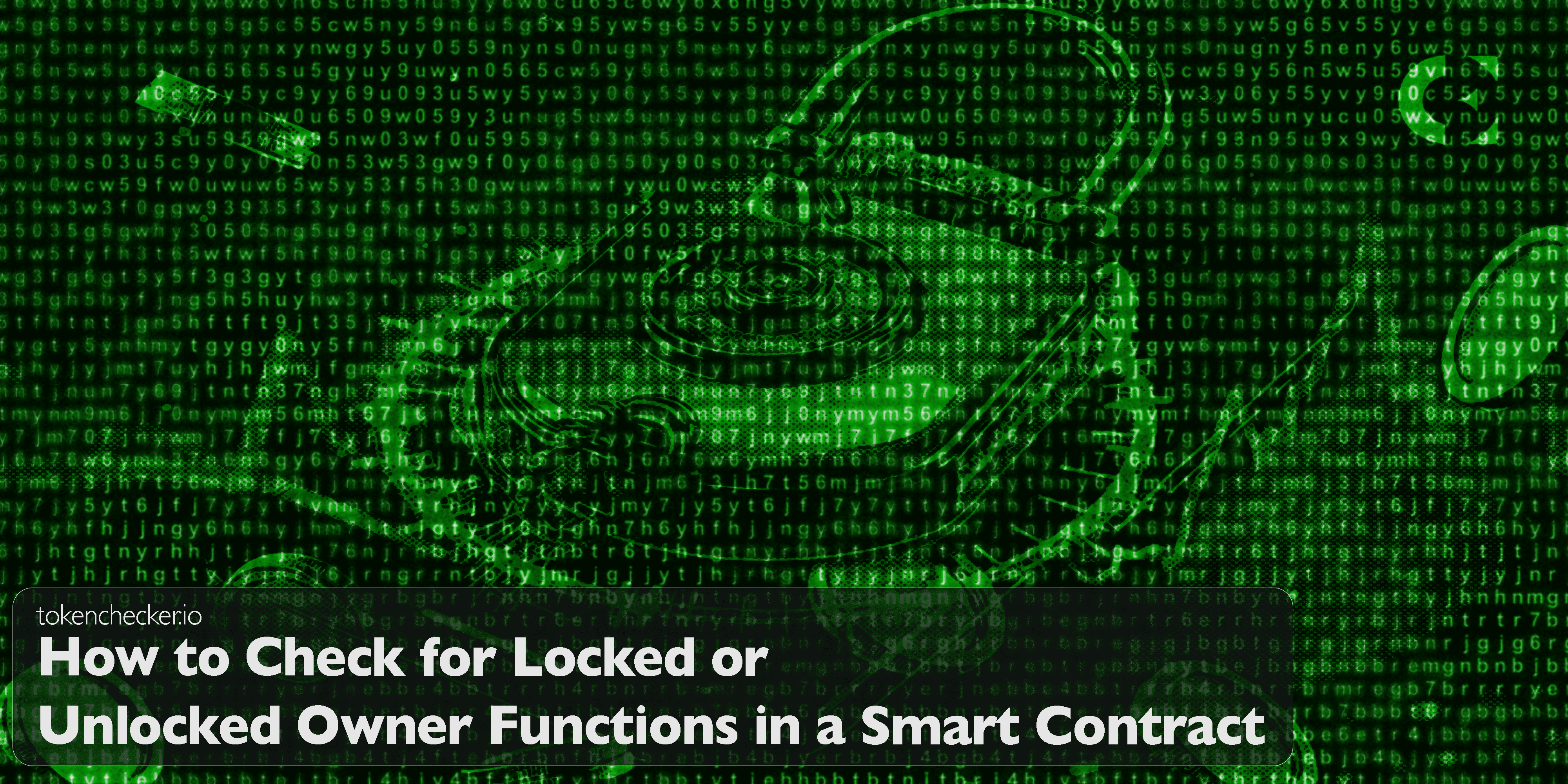
How to Check for Locked or Unlocked Owner Functions in a Smart Contract
Introduction
Every smart contract is built on the promise of automation and transparency. But behind that code often hides something far more centralized than most investors realize owner-only functions. These are the powerful switches that let someone freeze trading, mint new tokens, or even drain liquidity.
So, how do you check if a contract has “locked” functions that only the creator can use? And more importantly, how do you know if those powers have been renounced or are still in play, ready to be abused?
Let’s walk through what owner functions are, how to detect them, and how to verify their status using blockchain tools and tokenchecker.io.
What Are Locked Functions?
In most contracts, the developer is granted special permissions under something called the Ownable pattern. Functions marked with the onlyOwner modifier are exclusively available to this address the owner. That includes some of the most dangerous functions a contract can have:
- Minting new tokens
- Pausing trades
- Blacklisting wallets
- Changing fees
These are what we call “locked” functions they're accessible only by the current owner. If that key isn’t revoked or renounced, the owner can still flip those switches at any time.
Why Ownership Status Matters
If a contract has renounced ownership, it means the owner set their address to a dead wallet (0x000...000). After that, those special functions can never be triggered again. This is often seen as a positive sign for decentralization but it’s not always that simple.
If a contract still has an active owner, you need to ask:
- Who controls that wallet?
- Is it a single dev?
- Is it a multisig or DAO?
- Can they still upgrade the code via a proxy?
Knowing this helps you evaluate the real power dynamics of a token and whether it’s safe or not.
How to Check Locked Functions (Step-by-Step)
1. Use a Blockchain Explorer
Visit sites like Etherscan or BscScan and paste the contract address.
- Go to the “Contract” tab.
- Make sure the source code is verified.
- Look for functions marked with onlyOwner.
Under the “Read Contract” tab, you can also run:
- owner() to see who controls it
- Check if renounceOwnership() or transferOwnership() is present
The “Events” tab will show a record of ownership transfers. If you see an event where newOwner is set to 0x000...000, that means ownership was renounced.
2. Use tokenchecker.io
If you don’t want to dig through code manually, use tokenchecker.io.
We automatically flag:
- Whether a contract is still owned
- Whether it uses proxy logic to allow upgrades
- If dangerous functions like mint, pause, or fee changes are still active
We even tell you if the contract lies about renouncement some devs keep control through hidden proxies or backup contracts.
Real Risk, Real Examples
Many scam tokens maintain locked owner functions even after pretending to “renounce” control. They’ll deploy proxy-based contracts that let them re-enable functions later or hide admin keys behind multisigs no one checks.
In one documented rugpull, the dev claimed ownership was renounced. But a proxy allowed them to upgrade the contract and lock trading anyway. By the time users realized, the funds were gone.
The Safer Setup: Multisig or DAO
Instead of a single owner, some projects transfer control to:
- A multisig wallet (2 of 3 or 3 of 5 signers required)
- A DAO, where token holders vote on changes
This spreads power out and reduces the risk of a single person draining the contract. tokenchecker.io also highlights whether a multisig or DAO controls the contract and whether it looks secure.
Final Thoughts
Locked owner functions are one of the easiest things to overlook and one of the riskiest. Always ask:
- Is the owner function still active?
- Has ownership been truly renounced or just claimed to be?
- Can the contract be upgraded via a proxy?
tokenchecker.io is built to expose this layer of risk. We help you spot contracts with hidden control and warn you before you interact. In crypto, control is everything. If the owner still holds the keys, you're the one at risk.